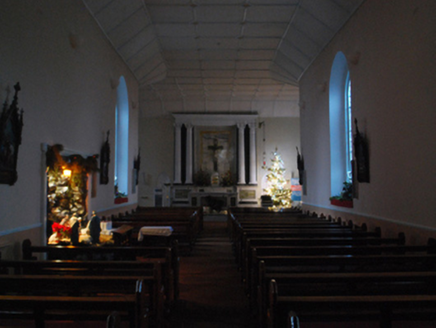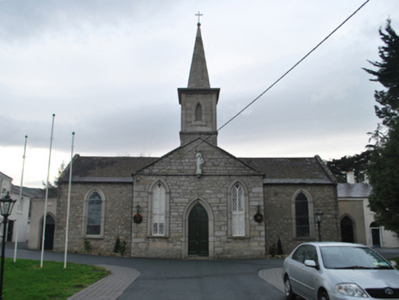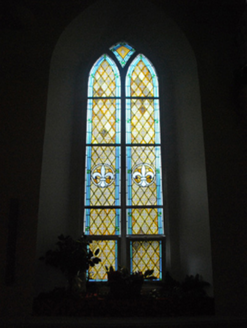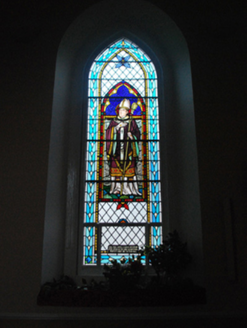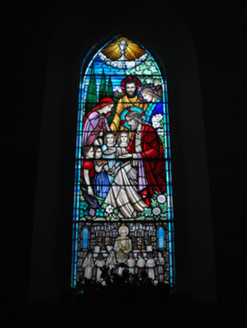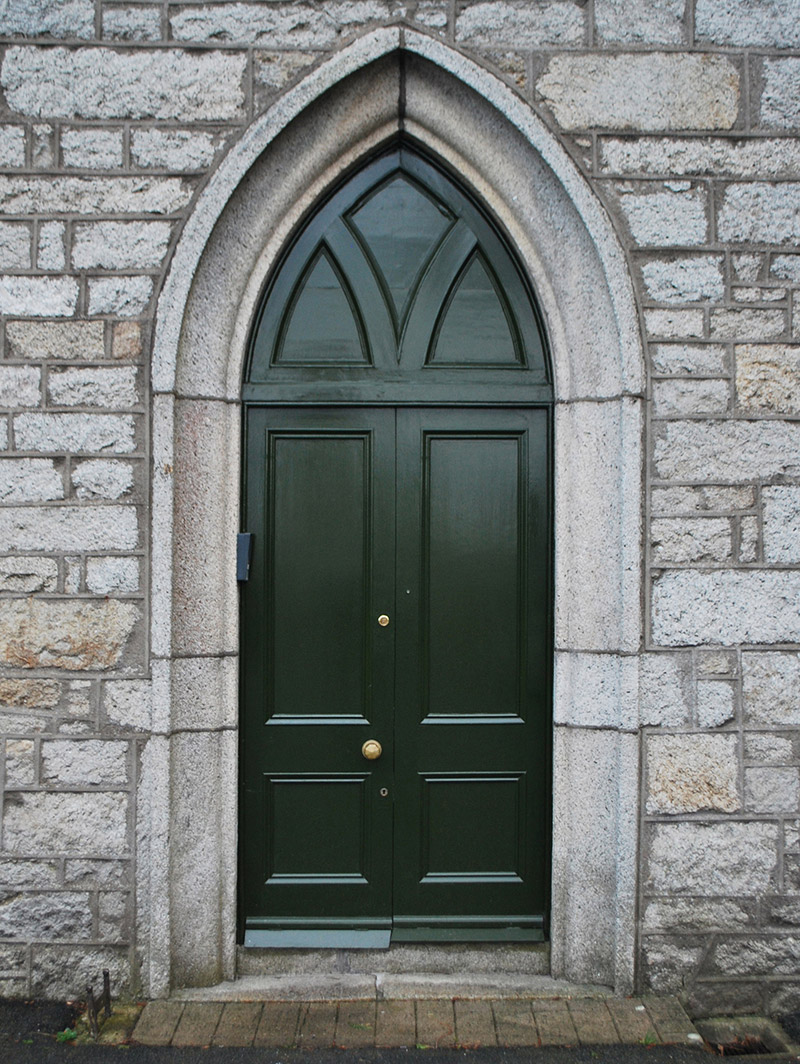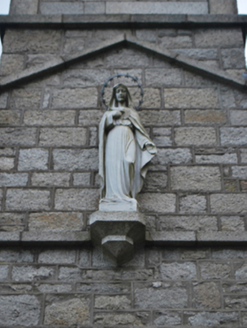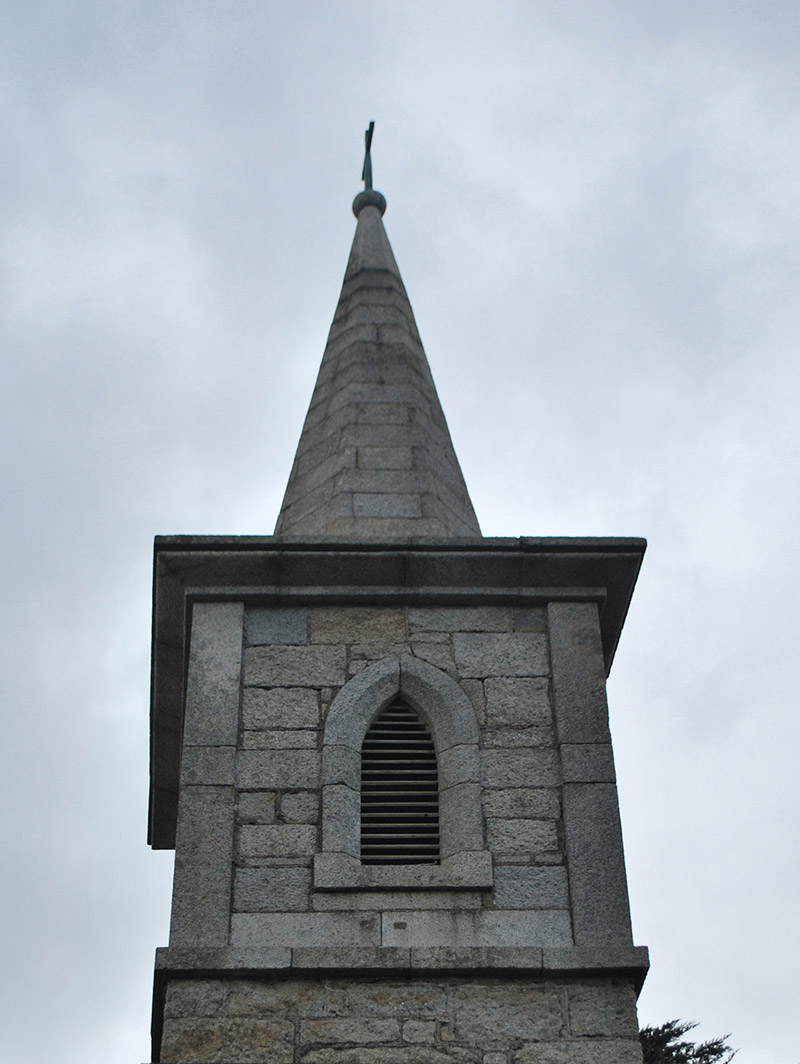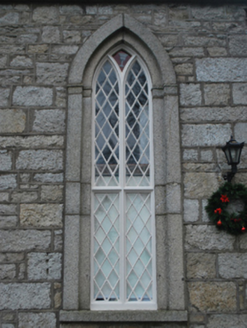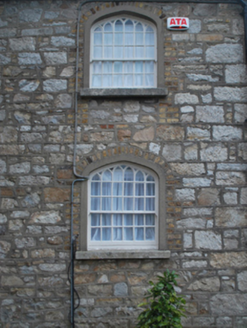Survey Data
Reg No
60220042
Rating
Regional
Categories of Special Interest
Architectural, Artistic, Historical, Social
Original Use
Church/chapel
In Use As
Church/chapel
Date
1805 - 1835
Coordinates
318396, 225863
Date Recorded
27/02/2013
Date Updated
--/--/--
Description
Detached four-bay double-height Catholic church, begun 1806; completed 1830, on a cruciform plan comprising two-bay double-height nave opening into single-bay (single-bay deep) double-height transepts centred on chancel to crossing (east); three-bay full-height sacristy (east) on a symmetrical plan centred on single-bay three-stage engaged tower on a square plan supporting octagonal spire. "Unfinished", 1837. "Finished", 1840. Renovated, 1956. Renovated with sanctuary reordered. "Restored", 1996. Pitched slate roof on a cruciform plan with lichen-spotted ridge tiles, cut-granite coping to gables on cut-granite kneelers including cut-granite coping to gable to entrance (west) front on cut-granite kneelers with Celtic Cross finial to apex, and cast-iron rainwater goods on cut-granite eaves retaining cast-iron downpipes. Rendered, ruled and lined walls with rendered quoins to corners; repointed coursed or snecked rubble granite walls (east) with cut-granite flush quoins to corners. Tudor-headed window openings (nave) with cut-granite sills, Y-mullions (west), and rendered surrounds having stepped reveals (west) or cut-granite surrounds having stepped reveals (east) framing storm glazing over fixed-pane fittings having stained glass margins centred on leaded stained glass panels. Tudor-headed window openings (transepts) with cut-granite sills, and cut-granite surrounds having stepped reveals framing storm glazing over fixed-pane fittings having stained glass margins centred on leaded stained glass panels. Pointed-arch central door opening (east) with cut-granite step threshold, and cut-granite surround having moulded reveals framing timber panelled double doors having overpanel. Lancet flanking window openings with cut-granite sills, timber Y-mullions, and cut-granite surrounds having stepped reveals framing fixed-pane fittings having lattice glazing bars. Tudor-headed window openings with cut-granite sills, and rendered repointed yellow brick block-and-start surrounds framing twelve-over-twelve timber sash windows having Y-tracery glazing bars. Full-height interior with balustraded choir gallery (west), carpeted central aisle between timber pews, Gothic-style timber stations between stained glass windows (----), and stained glass windows (undated) centred on cut-veined white marble stepped dais to sanctuary to crossing (east) reordered with cut-veined white marble panelled altar below Classical-style reredos. Set in landscaped grounds with granite ashlar piers to perimeter having stringcourses below pyramidal capping supporting crocketed cast-iron double gates.
Appraisal
A church representing an integral component of the early nineteenth-century built heritage of south County Dublin with the architectural value of the composition, 'a spacious building [to which is] attached a good residence for the priest' (Lewis 1837 II, 544), suggested by such attributes as the traditional cruciform plan form, aligned along a slightly skewed liturgically-correct axis; the "pointed" profile of the openings underpinning a contemporary Georgian Gothic theme; and the polygonal spire embellishing the roofline as a picturesque eye-catcher in the landscape. Having been well maintained, the elementary form and massing survive intact together with quantities of the historic or original fabric, both to the exterior and to the vaulted interior reordered in accordance with the liturgical reforms sanctioned by the Second Ecumenical Council of the Vatican (1962-5) where contemporary joinery; vibrant stained glass; and a Classical reredos, all highlight the artistic potential of a church forming part of a neat self-contained group alongside an adjacent parochial house (see 60220043) and presbytery (see 60220044) with the resulting ecclesiastical ensemble making a pleasing visual statement in an urbanised village street scene.
